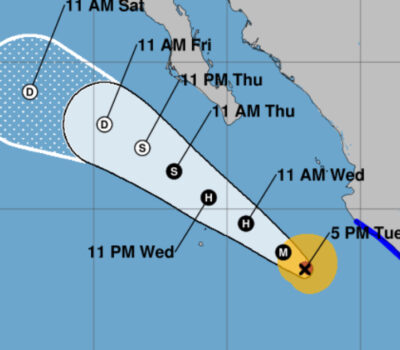Mexico’s Foreign Relations Ministry sues Google for using “Gulf of America” on its U.S. maps, arguing only coastal nations can officially name shared waters.
Puerto Vallarta, Mexico – In a landmark assertion of digital sovereignty, Mexico’s Foreign Relations Ministry has filed suit against Google in a Mexico City federal court, challenging the tech giant’s decision to label the Gulf of Mexico as the “Gulf of America” on its U.S.-facing maps. President Claudia Sheinbaum announced the legal action today, underscoring Mexico’s contention that no foreign power may unilaterally rename the internationally recognized body of water.
According to the government’s complaint, which was lodged under civil procedure in the capital, Google’s U.S.-only labeling conflicts with both historical precedent and international naming conventions. “The Gulf has been known for centuries as the Gulf of Mexico,” said President Sheinbaum. “While the United States may choose domestic terminology for its continental shelf, it cannot impose that name on the entire basin.”
A Clash of Naming Rights
The dispute traces back to a February 2025 executive order by U.S. President Donald Trump, instructing federal agencies to adopt “Gulf of America” in their official documents. Google subsequently updated its map labels for users in the United States to reflect that change. In Mexico—and across most of the rest of the world—Google continues to display “Gulf of Mexico,” sometimes appending the parenthetical “Gulf of America” for U.S. users abroad.
Mexico’s lawsuit demands that Google distinguish clearly between the waters off each nation’s coast, preserving “Golfo de México” for Mexican adjacent waters. The filing also seeks a court injunction to halt Google’s current practice while the case is pending, as well as potential reparations for reputational harm.
Sovereignty and International Standards
At the heart of Mexico’s argument is state sovereignty over maritime nomenclature. Under the United Nations Convention on the Law of the Sea (UNCLOS), coastal states enjoy exclusive rights over their territorial seas and economic zones. Although UNCLOS does not explicitly dictate naming protocols, Mexico’s legal team argues that long-established international usage—as recognized by bodies like the International Hydrographic Organization (IHO) and the United Nations Group of Experts on Geographical Names—confers de facto authority on coastal nations to name shared bodies of water.
“Cartographic nomenclature is not merely a semantic detail; it carries weight in navigation, fisheries regulation, and environmental policy,” noted Dr. María Fernández, maritime law scholar at UNAM. “Allowing unilateral renaming by a foreign government or private company sets a troubling precedent.”
Google’s Response
Google spokesperson Cris Turner, Vice President of Government Affairs and Public Policy, reiterated the company’s policy of reflecting local naming conventions based on user location and official directives. In a February letter shared by the Mexican government, Turner asserted that Google applies its map policies “impartially and consistently across regions,” and that the U.S. map labels merely comply with the Trump administration’s guidance for domestic audiences.
Wider Implications
The case arrives amid growing concerns over the role of global tech platforms in mediating geopolitical disputes. Similar naming controversies have arisen in other regions—such as the Sea of Japan/East Sea dispute between Korea and Japan—but rarely has a state taken a private company to court over a map label.
Legal observers say the outcome could force Google and its competitors to develop more granular, country-specific labeling systems or to adhere more strictly to international naming authorities. “This suit could redefine how digital cartography balances user preferences, government directives, and global standards,” Fernández added.
Next Steps
Under Mexican civil procedure, Google must respond to the complaint within 30 days. If the court grants Mexico’s injunction request, Google may be compelled to revert to “Gulf of Mexico” exclusively on all its platforms servicing Mexican territory—and perhaps beyond. Should either party appeal, the matter could ascend to the Collegiate Court (Tribunal Colegiado) and potentially set litigation precedents across Latin America and other coastal regions.
As the legal battle unfolds, Mexico’s action spotlights the intersection of technology, diplomacy, and sovereignty—raising questions about who ultimately holds authority in the digital mapping of our world.
Mexico’s Foreign Relations Ministry sues Google for using “Gulf of America” on its U.S. maps, arguing only coastal nations can . . .












